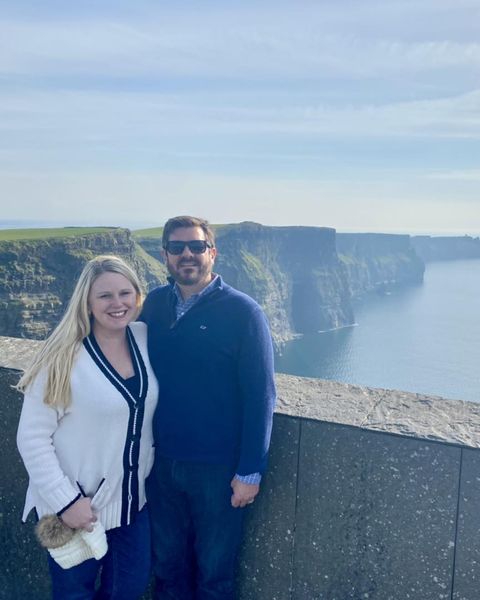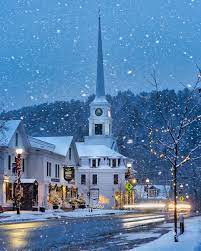Vermont, the Green Mountain State, has a strong independent streak. When the rest of the U.S. first banded together, Vermont chose to go it alone and remained an independent nation for 14 years before joining the Union as the 14th state. The state's constitution, first drafted in 1777, was the world's first to outlaw slavery.
Today, Vermonters are still doing things their own way: They elected the only socialist in the U.S. Congress—Bernie Sanders, who now represents the state as a U.S. Senator registered as an Independent; and the Vermont legislature was the first in the nation to sanction civil unions between same-sex partners. Although the state is viewed as one of the most progressive in the country, tradition is also important. In the continuation of a 200-year-old tradition, many locales still adhere to the official Town Meeting Day, held the first Tuesday in March, when residents gather to vote "on the floor" on town and school budgets.
Vermont also stands apart as a travel destination. That, too, comes at least in part from the temperament of its citizens: The small towns have a real sense of community—visible even to outsiders—and progressive thinkers have gone so far as to pass a law prohibiting billboards.
Of course, the other reason that Vermont is a great vacation spot is its natural beauty (which inspired the antibillboard legislation). The state, whose name is French for "green mountain," is home to quaint villages, twisting rural routes, stone fences and tree-covered mountains. Known for its spectacular scenery, Vermont maintains more than 50 state parks as well as Green Mountain National Forest, which extends nearly two-thirds the length of the state and has hundreds of miles/kilometers of hiking and biking paths.
Several of the state's most popular ski areas (Stratton and Sugarbush, for example) also lie within the National Forest. Although downhill skiing is the state's forte, cross-country skiing is also popular, and there are some 40 ski-touring centers spread throughout the state.
Despite Vermont's many attractions for winter-sports enthusiasts, the state is at its most spectacular in the fall, especially late September to mid-October. Visitors hoping to see fall foliage will find it as close as the nearest rural road. But the chairlifts at most of the state's ski areas, including Killington, Stratton Mountain and Stowe, also offer exceptional views of the color show. Visitors planning to arrive during autumn should make reservations months in advance: The changing leaves always draw big crowds.
Geography
The Green Mountains, heavily wooded slopes covering some of the oldest rocks on the planet, form the spine of Vermont, with Mount Mansfield the highest point at 4,393 ft/1,339 m. The Greens are part of the Appalachian Mountain chain that stretches from Alabama to the Gaspe Peninsula in Quebec; the Appalachian Trail traverses the state from near the southwestern corner—whose mountains are part of the Taconic Range—to the Connecticut River at Norwich.
The mountains give the state its character, and also create a divide between east and west. The eastern border with New Hampshire is formed by the 410-mi/660-km Connecticut River, New England's longest river. On the west side, heading north, the Taconics give way to the arable lowlands bordering Lake Champlain.
History
Before it became a part of the U.S., Vermont was home to members of the Iroquois confederation. They lived in fortified communities along rivers or on lakeshores and resided in communal longhouses. The vast forests provided their livelihood—wood and bark for shelter, animals for food and clothing.
Following French explorer Samuel de Champlain's visits in the early 1600s, European colonists arrived. Initially the French held the region, but English settlers soon encroached on what the French considered their territory. The French failed to stem the tide of newcomers—even after enlisting the aid of the Iroquois—and by 1760 had given up their holdings completely.
Next, the English colonies fought over Vermont: Both New Hampshire and New York claimed the turf. The Vermont settlers (who were largely opposed to the New Yorkers) took matters into their own hands: Ethan Allen's Green Mountain Boys were formed in 1770 to ward off the New York militia. They also played an important role in the Revolutionary War, fighting against the British in the battles of Hubbardton and Bennington. Though they fought alongside the other former colonies, Vermonters did not agree to join the U.S. until 1791. However, once in the union, the state flourished as an agricultural mainstay of the new nation.
Dairy and maple products remained Vermont's principal moneymakers until the early 1900s, although it was also an important copper producer during the 1800s. Agriculture is no longer the state's economic mainstay, but it remains a significant industry. Vermont's dairy industry is the largest in New England, and Vermont is home to more than 150,000 dairy cows.
Agriculture is not limited just to milk and milk products. Green Mountain State farmers also raise goats, llamas, donkeys, Christmas trees and produce. Vermont is also the nation's largest producer of maple syrup. Farming has been on the rise in the past few decades, particularly organic farming.
Manufacturing also plays a large role in the state's economy. Production of electrical and electronic components, machinery and other manufactured goods is now a major industry, and a thriving, year-round tourism business reigns supreme.
Snapshot
Vermont's main attractions include downhill and cross-country skiing, mountain biking, fall foliage, antiques shops, historic homes and museums, the Green Mountain Railroad, maple syrup, covered bridges, Lake Champlain and country inns.
Travelers interested in outdoor recreation, U.S. history, spectacular scenery and the charms of small New England towns will have a great time in Vermont.
Potpourri
The Morgan horse, America's oldest native equine breed, dates back to a single horse owned by Vermont singing school master Justin Morgan. Named Figure, the original Morgan is celebrated in many legends that proclaim his strength and speed. The Morgan breed is now popular around the world and is Vermont's state horse.
Not only did it breed the Morgan, Vermont also spawned the Mormon: Joseph Smith, the original prophet of the Latter-Day Saints, was born in Sharon in 1805, and Brigham Young, one of the church's early leaders, was born in Whitingham in 1801.
Those Vermonters sure love their animals. Dog Mountain in St. Johnsbury is artist Stepen Huneck's homage to man's best friend. There's an art gallery with his dog-inspired paintings and sculpture, but the big draw is a dog chapel where many a pet lover has come to remember and say a prayer for furry friends who have passed on.
The first ski tow in the U.S. was built in Woodstock in 1934.
The nation's first postage stamp was made in Brattleboro in 1846.
Two Nobel Prize-winning authors chose to live in Vermont. Rudyard Kipling moved to his wife's hometown of Dummerston in the late 1890s. There he wrote Captains Courageous and conceived The Jungle Book and was visited by the likes of Sir Arthur Conan Doyle—who is said to have brought skiing to Vermont when he brought his friend, Kipling, a pair of skis as a gift. Saul Bellow, a 20th-century writer, lived in the small town of Jacksonville late in his life.
Four-time Pulitzer Prize winner and U.S. Poet Laureate Robert Frost also lived and worked in Vermont at times during his career. He's buried in Bennington where his headstone reads, "I had a lover's quarrel with the world." Other famous writers who have called Vermont home include John Irving, Jamaica Kincaid and David Mamet.
Jericho resident Wilson "Snowflake" Bentley was the first person to photograph a single snowflake, in 1885. He captured more than 5,000 snowflakes on film and so proved that no two snowflakes are alike.
The Bennington Museum houses the most extensive public collection of works by primitive painter Grandma Moses, who lived in nearby Eagle Bridge, N.Y.
In 1940, the first Social Security benefit check was paid to Vermont native Ida Fuller of Ludlow. Her Social Security Number was 000-00-0001.
Ben & Jerry's socially aware and now upscale ice cream company began business in a renovated gas station in Burlington in 1978.
The Jefferson Memorial was built of marble from the quarry in East Dorset.
In Plymouth, farmers discovered gold in the early 1800s, starting a short-lived gold rush. The excitement died down when the farmers found they made more money farming than panning for gold.
In 1939, Maria von Trapp and her family (the inspiration for The Sound of Music) purchased an old farmhouse in Stowe. Today, the Trapp Family Lodge is the centerpiece of a large resort still owned and operated by the Trapps.
Vermont is the birthplace of two U.S. presidents, Calvin Coolidge and Chester A. Arthur.


































